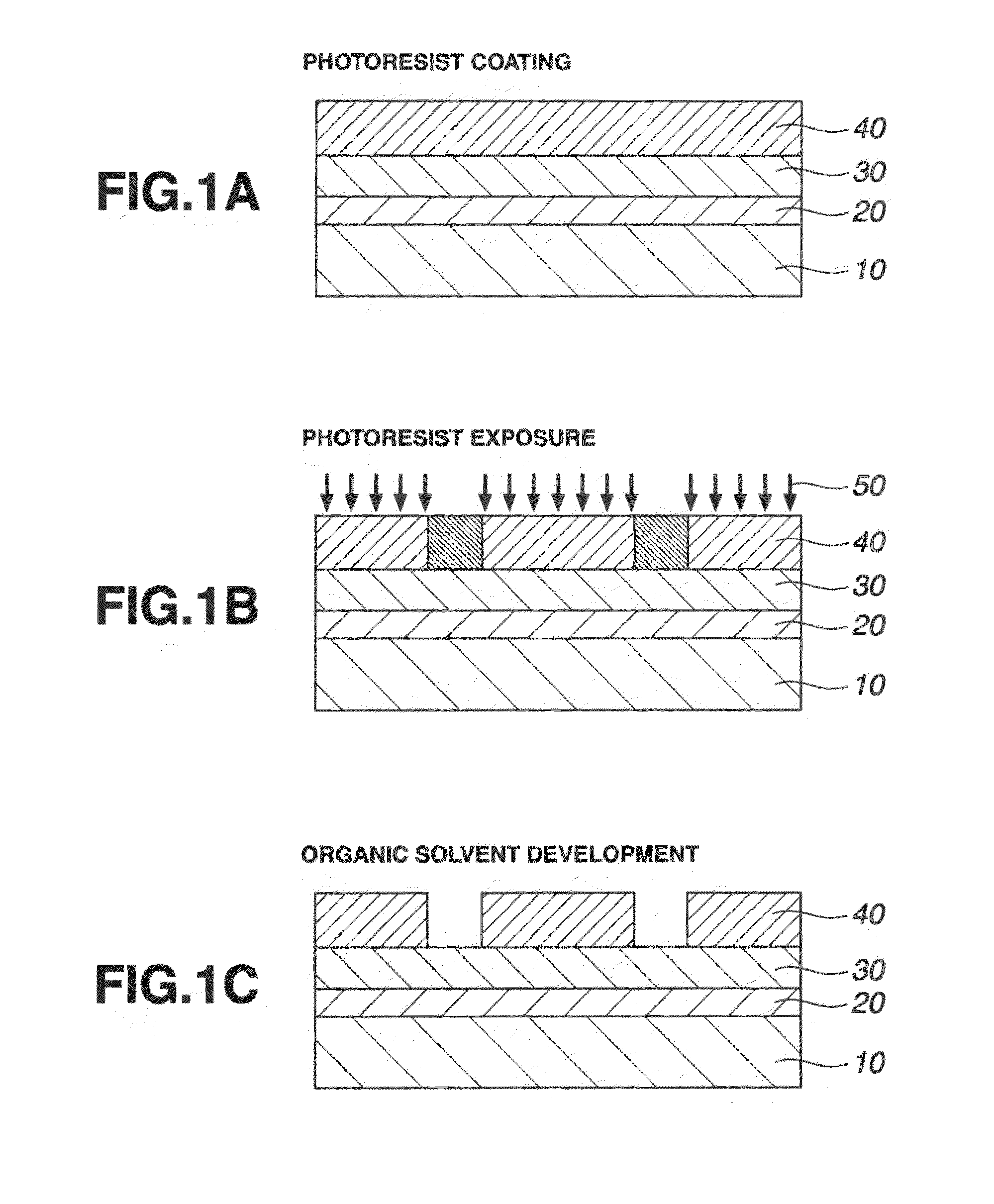Negative pattern forming process
a negative pattern and forming technology, applied in the field of pattern forming process, can solve the problems of low resist resistance etching resistance, difficult to reduce the feature size of the hole pattern, and high cost of scanner
- Summary
- Abstract
- Description
- Claims
- Application Information
AI Technical Summary
Benefits of technology
Problems solved by technology
Method used
Image
Examples
example
[0151]Examples of the invention are given below by way of illustration and not by way of limitation. The abbreviation “pbw” is parts by weight. For all polymers, Mw and Mn are determined by GPC versus polystyrene standards using tetrahydrofuran solvent.
Preparation of Resist Composition
[0152]Resist compositions in solution form (Resists 1 to 15) within the scope of the invention were prepared by dissolving components in a solvent in accordance with the recipe shown in Table 1, and filtering through a Teflon® filter with a pore size of 0.2 μm. Similarly, comparative resist compositions (Resists 16 to 18) outside the scope of the invention were prepared. Polymers 1 to 18 as base resin in Tables 1 and 2 have a structure, molecular weight (Mw) and dispersity (Mw / Mn) as shown in Tables 3 to 5. In Tables 3 to 5, the value in parentheses indicates a molar fraction (mol %) of the relevant recurring unit.
[0153]Polymeric additives PA-1 to 3 in Tables 1 and 2 were added for providing the resist...
PUM
| Property | Measurement | Unit |
|---|---|---|
| Percent by mass | aaaaa | aaaaa |
| Wavelength | aaaaa | aaaaa |
| Wavelength | aaaaa | aaaaa |
Abstract
Description
Claims
Application Information
 Login to View More
Login to View More - R&D
- Intellectual Property
- Life Sciences
- Materials
- Tech Scout
- Unparalleled Data Quality
- Higher Quality Content
- 60% Fewer Hallucinations
Browse by: Latest US Patents, China's latest patents, Technical Efficacy Thesaurus, Application Domain, Technology Topic, Popular Technical Reports.
© 2025 PatSnap. All rights reserved.Legal|Privacy policy|Modern Slavery Act Transparency Statement|Sitemap|About US| Contact US: help@patsnap.com



